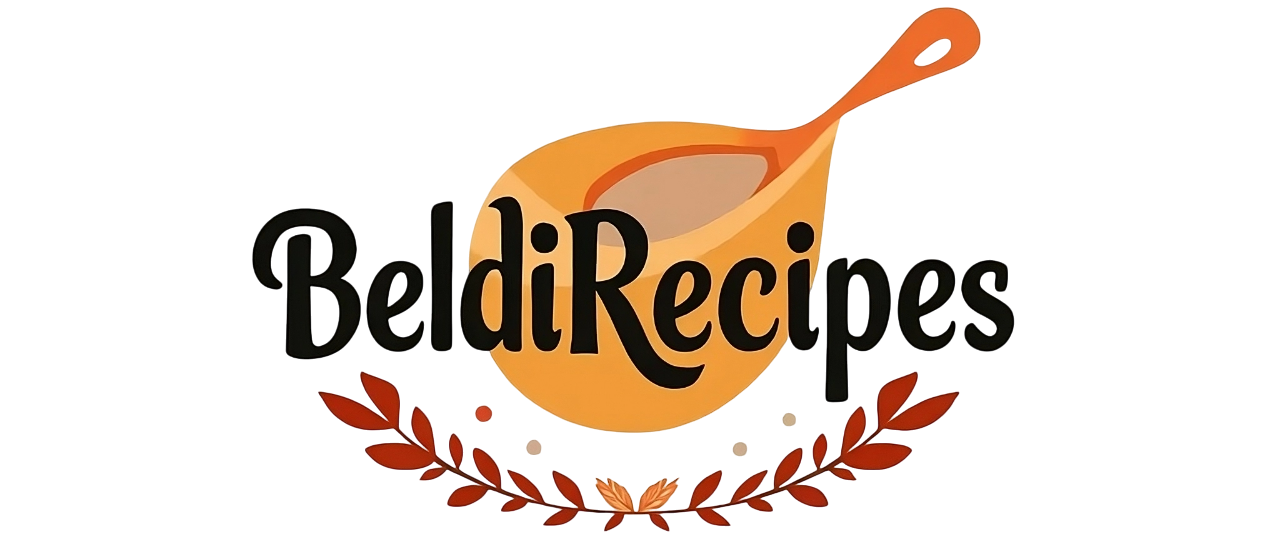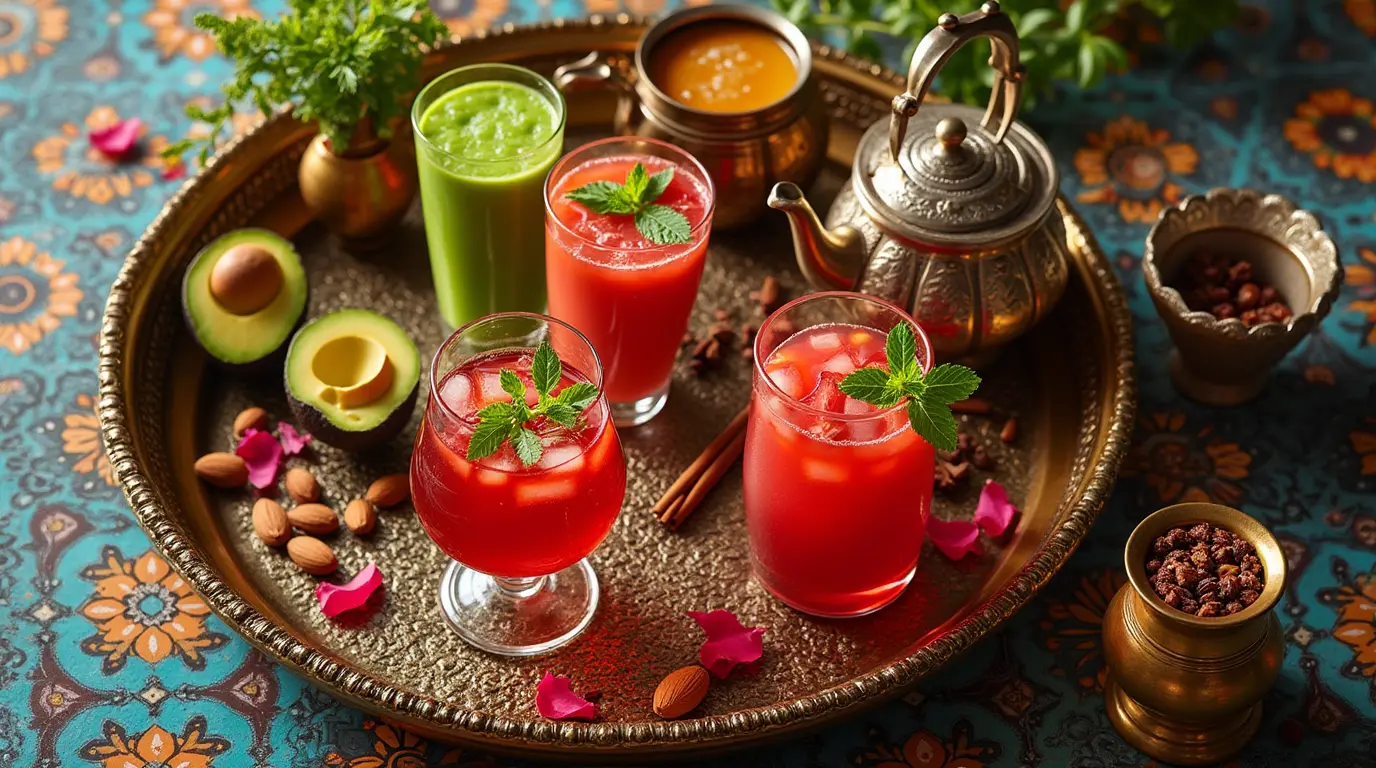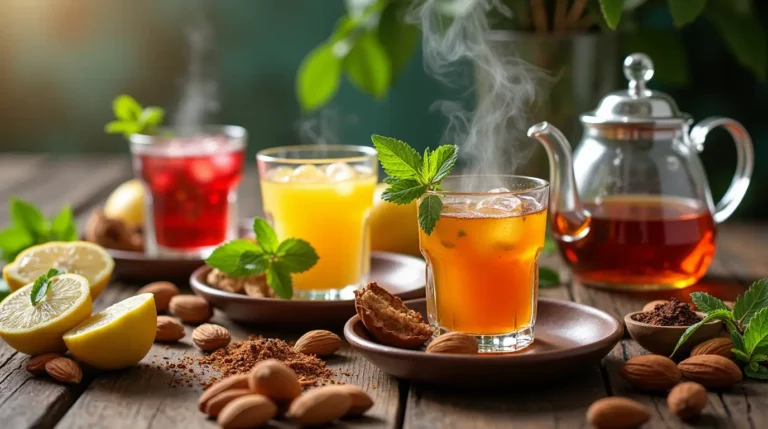10 Traditional Moroccan Drinks You Should Try
Morocco, with its vibrant culture and rich culinary traditions, offers a treasure trove of unique beverages that reflect its diverse heritage. From the iconic mint tea to refreshing fruit concoctions and warming spiced drinks, Moroccan beverages are an adventure for the taste buds. Whether you’re planning a trip to this North African gem or simply want to bring a taste of Morocco into your home, here are ten traditional Moroccan drinks that deserve a spot on your must-try list.
1. Mint Tea (Atay Nana) – Moroccan Drinks
No exploration of Moroccan drinks would be complete without starting with the country’s national beverage – mint tea, or “atay nana” as locals call it. More than just a drink, mint tea represents Moroccan hospitality in its purest form.
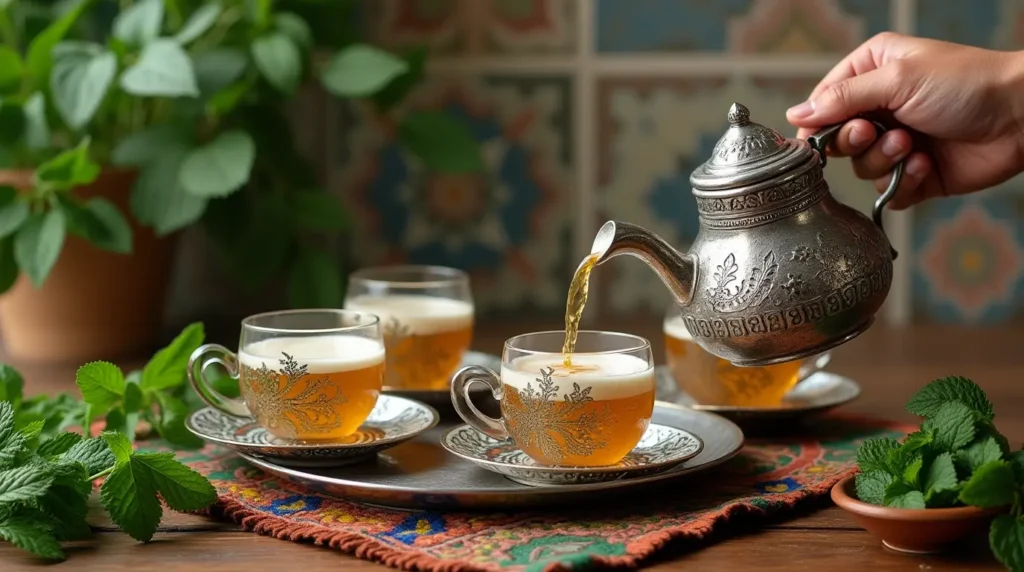
Traditionally prepared by the male head of the household, Moroccan mint tea is an art form that follows a specific ritual. The tea is made with green tea leaves (usually Chinese gunpowder tea), fresh mint leaves, and plenty of sugar. The ingredients are steeped in a special metal teapot called a “berrad,” and the tea is famously poured from a height into small, decorative glasses to create a frothy top.
What makes Moroccan mint tea special is not just its refreshing taste but the social experience surrounding it. Serving tea to guests is a gesture of friendship and hospitality. There’s even a saying in Morocco that goes: “The first glass is as gentle as life, the second is as strong as love, the third is as bitter as death.” This refers to how the flavor changes as the tea continues to steep through multiple servings.
Pro tip: For an authentic experience, try your mint tea very sweet – Moroccans typically add a generous amount of sugar. If you’re making it at home, don’t be shy with the mint – use a large handful for a small pot of tea.
2. Avocado Smoothie (Jus d’Avocat) – Moroccan Drinks
Don’t let the name fool you – this isn’t your typical green health smoothie. Morocco’s avocado juice, or “jus d’avocat,” transforms the humble avocado into a rich, creamy dessert-like drink that’s popular throughout the country.
Found in juice stands and cafés across Morocco, this satisfying beverage blends ripe avocados with milk, sugar, and sometimes a touch of vanilla. The result is a thick, velvety smoothie that’s often topped with chopped nuts for added texture. Some variations include a shot of almond extract or orange flower water for an aromatic twist.
What’s fascinating about Morocco’s avocado smoothie is how it treats avocado as a fruit rather than a savory ingredient. This perspective makes perfect sense considering avocado’s botanical classification as a fruit, though many Western cuisines primarily use it in savory dishes.
The best avocado smoothies in Morocco are made with perfectly ripe avocados – not too firm and not overripe. The natural creaminess of the fruit creates a luscious texture that’s both refreshing and filling, making it an ideal afternoon pick-me-up during Morocco’s hot summer months.
3. Spiced Coffee (Nous Nous) – Moroccan Drinks
Coffee lovers will delight in Morocco’s unique coffee culture, especially the popular “nous nous” (which means “half-half” in Arabic). This Moroccan specialty is half strong espresso and half hot milk, similar to a café au lait but with distinctly Moroccan spices.
What sets nous nous apart from other coffee drinks is the addition of aromatic spices like cardamom, black pepper, sesame seeds, and occasionally nutmeg or cinnamon. These warming spices transform a simple coffee into a complex, fragrant experience that awakens the senses.
Found in cafés throughout Morocco’s cities, nous nous is particularly beloved as a breakfast drink, often paired with traditional Moroccan breakfast pastries like msemen (square-shaped, flaky flatbread) or beghrir (spongy pancakes with honey).
While historically coffee houses in Morocco were male-dominated spaces, today you’ll find people of all genders enjoying this delicious beverage in the country’s bustling cafés. For the full experience, sip your nous nous slowly while watching the world go by from a street-side café in Marrakech or Casablanca.
4. Almond Milk (Lait d’Amande) – Moroccan Drinks
Long before plant-based milks became trendy in Western countries, Moroccans were crafting delicious almond milk, or “lait d’amande.” This sweet, nutty beverage holds special significance during Ramadan, when it’s often served to break the fast.
Traditional Moroccan almond milk differs from commercial versions you might find in supermarkets. Made from ground blanched almonds, water, orange flower water, and sugar, it has a rich texture and distinctive floral notes. Some recipes include a touch of cinnamon or vanilla for added warmth.
Beyond its delicious taste, almond milk holds cultural significance in Morocco. It’s considered nourishing and energizing – perfect for replenishing the body after a day of fasting. It’s also commonly served at celebrations and special occasions throughout the year.
If you have the chance to try homemade Moroccan almond milk, you’ll notice it’s thicker and more flavorful than store-bought varieties. The orange flower water, in particular, gives it a uniquely Moroccan character that’s utterly delightful.
5. Pomegranate Juice (Jus de Grenade) – Moroccan Drinks
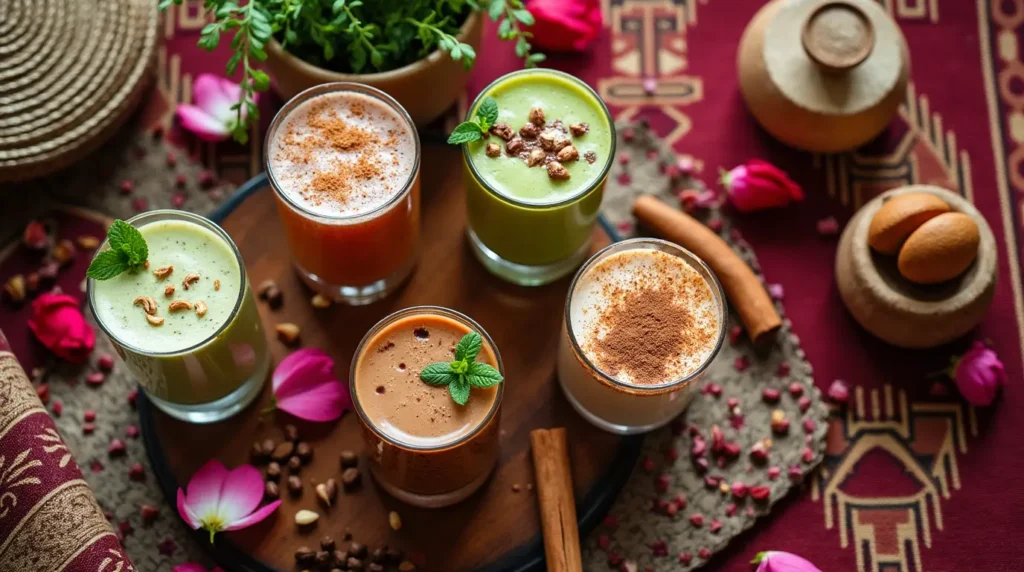
Vibrant, tangy, and packed with antioxidants, freshly squeezed pomegranate juice is a common sight at Morocco’s juice stands and markets. The country’s fertile regions produce excellent pomegranates, and Moroccans have perfected the art of transforming these ruby-red gems into refreshing beverages.
What makes Moroccan pomegranate juice special is its purity – typically made with nothing but fresh pomegranates, it allows the fruit’s natural sweetness and complexity to shine. Street vendors skillfully extract the juice using manual presses, creating a vibrant drink that’s as beautiful as it is delicious.
Pomegranates have long been valued in Moroccan culture for their health benefits and symbolism. Associated with fertility and abundance, these fruits figure prominently in traditional medicine and culinary traditions. The juice is particularly popular during pomegranate season in early fall when the fruits are at their ripest and most flavorful.
For the best experience, look for vendors who press the juice fresh in front of you. The brilliant red color and perfect balance of sweetness and tartness make this drink an unforgettable part of Morocco’s beverage landscape.
6. Orange Blossom Water (Ma Zhar) – Moroccan Drinks
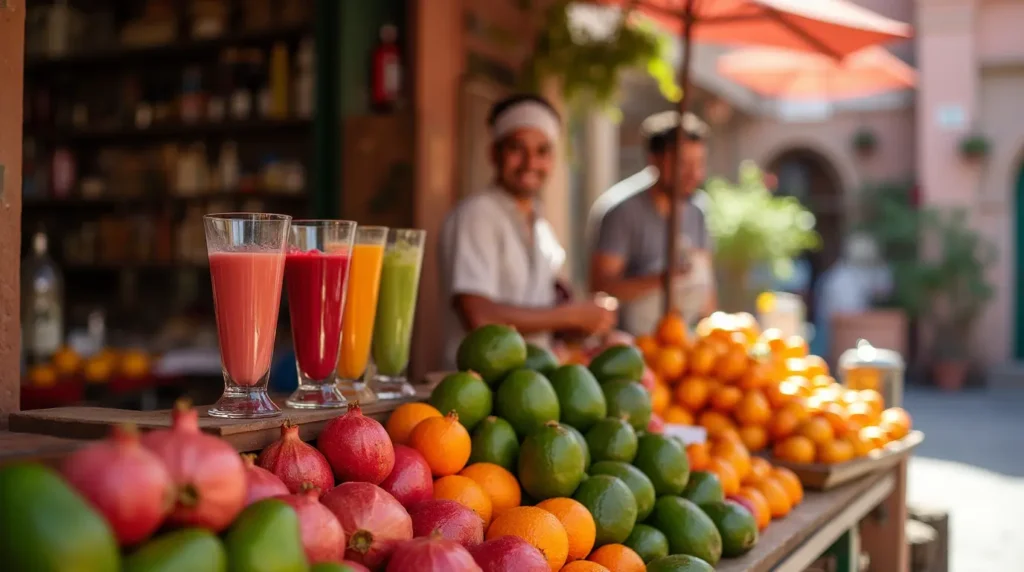
While orange blossom water might be familiar as a baking ingredient or cocktail component in Western cuisines, in Morocco, it’s sometimes enjoyed as a drink in its own right when diluted with water. Known as “ma zhar,” this fragrant water captures the essence of bitter orange blossoms.
Made by distilling water with the blossoms of the bitter orange tree (Citrus aurantium), orange blossom water has a delicate, floral character that’s both refreshing and calming. When served as a beverage, it’s typically diluted with water and sometimes sweetened with a touch of honey or sugar.
Beyond its role as a beverage, orange blossom water features prominently in Moroccan cuisine, adding aromatic notes to pastries, salads, and even savory dishes. It’s also used in religious ceremonies and traditional medicine for its soothing properties.
What makes this drink special is its subtle complexity – the flavor is distinctive yet gentle, offering a unique sensory experience that connects drinkers to Morocco’s rich botanical heritage. Even if you don’t try it as a standalone drink, you’ll likely encounter its characteristic aroma in many Moroccan foods and other beverages.
7. Sahleb (Orchid Root Drink) – Moroccan Drinks
When winter arrives in Morocco, locals warm up with sahleb, a comforting hot beverage with origins in the Ottoman Empire that has become a beloved part of Moroccan drinking culture. This unique drink is made from the powdered root of certain orchid species, creating a thick, satisfying texture similar to custard.
Traditional sahleb combines the orchid powder with milk, sugar, and warming spices like cinnamon, nutmeg, and sometimes rosewater. The result is a creamy, aromatic drink that’s typically garnished with chopped pistachios, shredded coconut, and a dusting of cinnamon.
Found in Morocco’s northern regions and particularly popular in the colder mountain areas, sahleb is valued not just for its delicious taste but for its warming properties. Local wisdom holds that it strengthens the body against winter chills and provides sustained energy.
What makes sahleb special is its unique mouthfeel – slightly thick and silky, it falls somewhere between a drink and a dessert. If you visit Morocco during the winter months, seeking out this comforting beverage offers a delicious glimpse into the country’s seasonal drinking traditions.
8. Khoudenjal (Galangal Coffee) – Moroccan Drinks
For an energizing drink with a fascinating history, look no further than khoudenjal, sometimes called “Moroccan spiced coffee” or “galangal coffee.” This traditional beverage combines coffee with galangal (a relative of ginger), black pepper, nutmeg, cinnamon, and sometimes cloves.
Unlike many coffee drinks that prioritize the coffee flavor above all else, khoudenjal creates a harmonious balance between the coffee and its warming spices. The galangal adds a distinctive peppery warmth that complements the natural bitterness of coffee, while the other spices contribute layers of aromatic complexity.
Historically, khoudenjal was valued not just as a delicious beverage but for its supposed medicinal properties. Traditional healers recommended it for everything from digestion issues to respiratory problems. Today, it’s still appreciated for its warming qualities and unique flavor profile.
The preparation of khoudenjal varies by region and family tradition, with some recipes calling for the spices to be ground together with the coffee beans before brewing, while others infuse them during the brewing process. Either way, this distinctive drink offers a window into Morocco’s rich tradition of spiced beverages.
9. Sellou Drink (Zmita) – Moroccan Drinks
While sellou is primarily known as a nutritious sweet eaten during Ramadan, some Moroccans also enjoy it in beverage form, particularly as a nourishing drink for new mothers. This unusual drink, sometimes called “zmita,” transforms the sesame and almond-based confection into a warming, energizing beverage.
To make the drink version of sellou, the roasted flour, sesame, almond, and spice mixture is combined with hot milk and sometimes honey or date syrup for added sweetness. The result is a rich, nutritious drink with a texture somewhere between a smoothie and hot chocolate.
Traditionally, this beverage is served to women after childbirth, as its nutrient-dense ingredients are believed to help restore strength and support milk production. The combination of healthy fats from nuts and seeds, complex carbohydrates from the toasted flour, and warming spices creates a truly nourishing concoction.
What makes the sellou drink fascinating is how it blurs the line between food and beverage – it’s substantial enough to be considered a liquid meal. For visitors to Morocco interested in traditional postpartum care practices, this unique drink offers insight into how culinary and medicinal traditions intertwine in Moroccan culture.
10. Rose Water (Ma Ward) – Moroccan Drinks
Completing our journey through Morocco’s traditional beverages is rose water, or “ma ward” – a delicate, floral drink that captures the essence of Moroccan roses. While rose water is commonly used as a culinary ingredient or beauty product worldwide, in Morocco, it’s sometimes enjoyed as a lightly sweetened beverage on its own.
Made by distilling water with rose petals (often from the fragrant Damascus rose variety), traditional rose water has a subtle yet distinctive flavor that’s immediately recognizable. When served as a drink, it’s typically diluted with water and sweetened with a small amount of sugar or honey.
Morocco’s Valley of Roses in the south is famous for its rose production, with an annual Rose Festival celebrating the spring harvest. The roses grown in this region are prized for their intense fragrance, which translates beautifully into rose water products, including the beverage version.
Beyond its pleasant taste, rose water is valued in Moroccan tradition for its supposed cooling properties and ability to calm the nerves. It’s often served at special occasions as a symbol of beauty and hospitality.
Bringing Morocco Home: Tips for Trying These Moroccan Drinks
If you’re inspired to explore these traditional Moroccan beverages at home, here are a few tips:
- For mint tea, use gunpowder green tea as your base and be generous with both the fresh mint and sugar for an authentic experience.
- When making fruit-based drinks like pomegranate or avocado, use the freshest ingredients possible to capture the true flavors of Morocco.
- Ingredients like orange blossom water and rose water can be found in Middle Eastern grocery stores, specialty food shops, or online.
- Don’t be afraid to adjust sweetness levels to your taste – many Moroccan drinks tend to be quite sweet by Western standards.
- Serve your Moroccan beverages in traditional glassware if possible – small, decorative glasses for mint tea or colorful tumblers for fruit juices add to the experience.
Whether you’re planning a Moroccan-themed gathering or simply want to expand your beverage horizons, these ten traditional drinks offer a delicious way to explore Morocco’s rich culinary heritage. From the ceremonial pouring of mint tea to the refreshing tang of pomegranate juice, each beverage tells a story of history, hospitality, and the unique flavors of this fascinating North African country. Cheers – or as they say in Morocco, “b’saha!” (to your health)!
